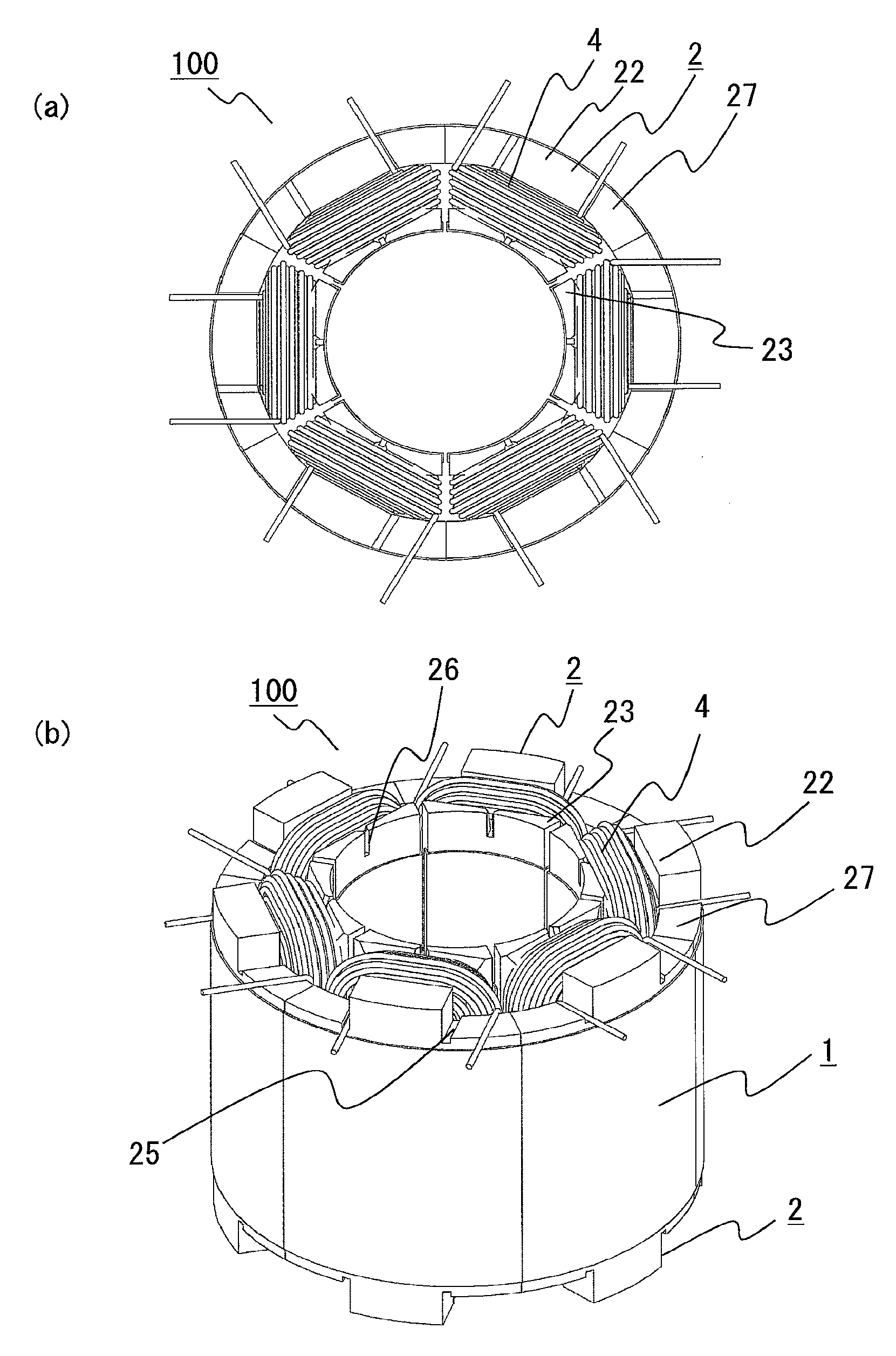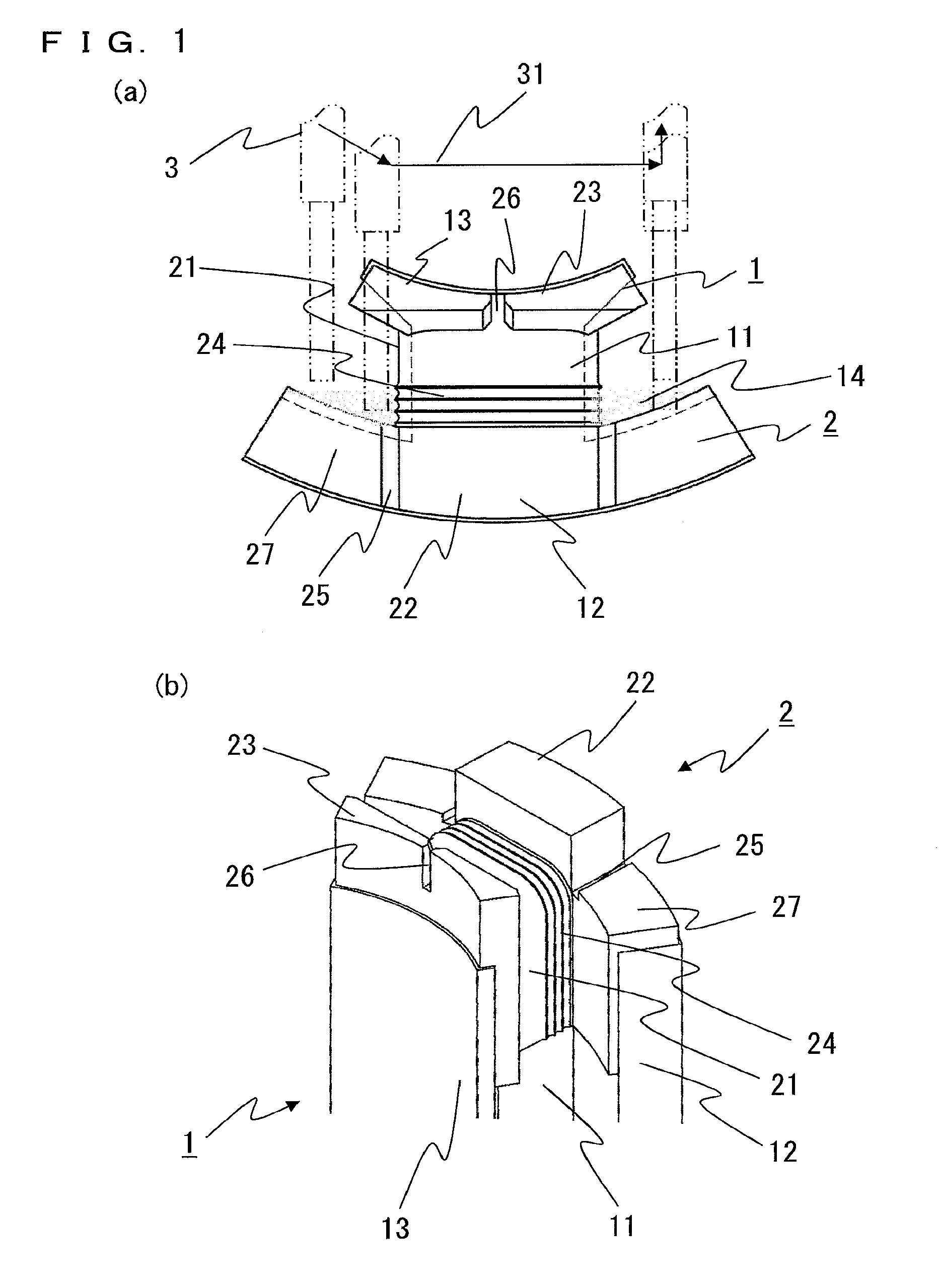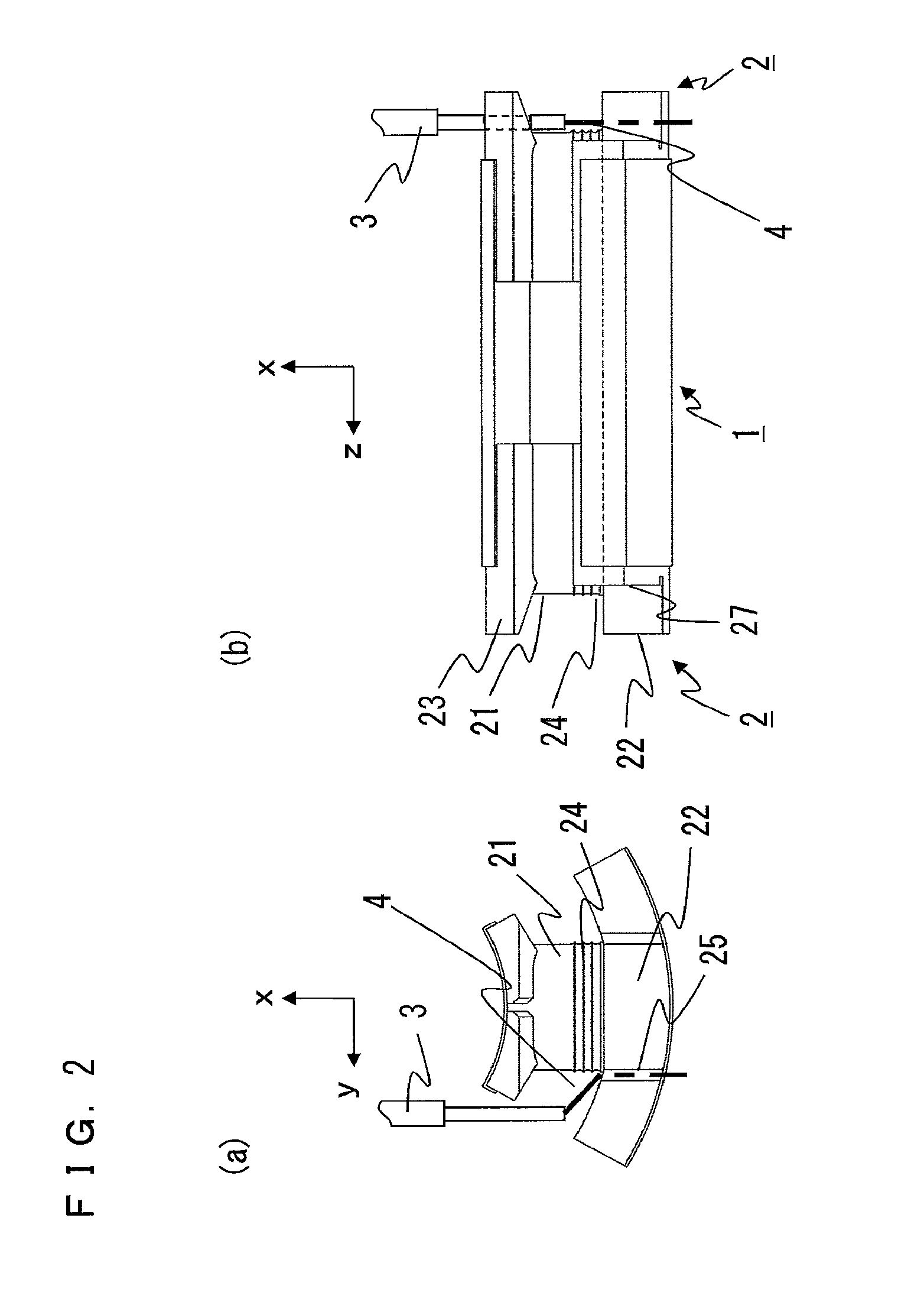Core winding method and stator
a winding method and stator technology, applied in windings, electrical devices, dynamo-electric machines, etc., can solve the problems of difficult winding of conductive wires on the core with a high occupancy, the tip of the nozzle cannot be made to approach a tooth portion, and the winding cannot be placed with a high positional accuracy, etc., to suppress the facility cost of winding and increase the number of turns
- Summary
- Abstract
- Description
- Claims
- Application Information
AI Technical Summary
Benefits of technology
Problems solved by technology
Method used
Image
Examples
embodiment 1
[0028]FIGS. 1(a) and 1(b) are a front view and a perspective view showing the shapes of a divided-type core and an insulator according to an embodiment of the present invention. FIGS. 2 to 8 are diagrams for explaining a core winding method according to embodiment 1 of the present invention.
[0029]A divided-type core 1 is formed by punching silicon steel plates or the like in the same shape by using a press mold and then laminating a plurality of the punched steel plates. Welding, bonding, swaging, or the like is used as means for fixing the laminated steel plates. The divided-type core 1 has: an arch-like yoke portion 12 having a radially outward convex shape; a tooth portion 11 protruding radially inward from the center portion of the yoke portion 12 and to be wound with a conductive wire 4; and a tooth end portion 13 connected to the end of the tooth portion 11. The yoke portions 12 of a plurality of the divided-type cores 1 are combined in a circular shape, to form a stator.
[0030...
embodiment 2
[0052]FIGS. 10 to 13 are diagrams explaining a core winding method according to embodiment 2 of the present invention. In embodiment 1, winding is started from the base portion side of the insulator. In the present embodiment, the case of starting winding from the winding frame end portion side of the insulator will be described. It is noted that the structures of the divided-type iron core and the insulator are the same as those of embodiment 1, and therefore the description thereof is omitted.
[0053]First, an end portion of the conductive wire 4 fed from the nozzle 3 is passed through the winding frame end portion side guide groove 26 of the insulator 2, and then the end portion of the conductive wire 4 is held by a chuck device not shown.
[0054]Then, the nozzle 3 is revolved along the end surface and the side surface of the divided-type core 1, whereby the conductive wire 4 is wound on the winding frame portion 21 of the insulator 2 from the winding frame end portion side to the ba...
PUM
| Property | Measurement | Unit |
|---|---|---|
| conductive | aaaaa | aaaaa |
| circumference | aaaaa | aaaaa |
| area | aaaaa | aaaaa |
Abstract
Description
Claims
Application Information
 Login to View More
Login to View More - R&D
- Intellectual Property
- Life Sciences
- Materials
- Tech Scout
- Unparalleled Data Quality
- Higher Quality Content
- 60% Fewer Hallucinations
Browse by: Latest US Patents, China's latest patents, Technical Efficacy Thesaurus, Application Domain, Technology Topic, Popular Technical Reports.
© 2025 PatSnap. All rights reserved.Legal|Privacy policy|Modern Slavery Act Transparency Statement|Sitemap|About US| Contact US: help@patsnap.com



